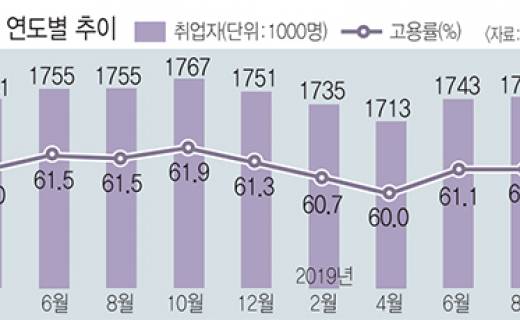It was found that the number of employed in Gyeongnam last December decreased by 67,000 compared to the same month last year. This decline is the highest ever since 1998, when related statistics were written monthly.
According to the’Employment Trends in Gyeongnam for December 2020′ released by the Southeast Regional Statistics Office on the 13th, the total number of employed in Gyeongnam in December of last year was 1684,000, a decrease of 67,000 (3.8%) from the same month last year. This is a further decrease from March 1999 (a decrease of 66,000 people) when the financial crisis was affected.

The employment rate in December of last year was 59.0%, down 2.3%p from the same month last year, and it was the lowest in four years since January 2016 (59.0%). In addition, the number of unemployed was 80,000, an increase of 31,000 (63.7%) from the same month of the previous year, and the unemployment rate was 4.5%, an increase of 1.8%p from the same month of the previous year. In particular, in the case of women, the unemployment rate was 6.2%, the highest ever since the related statistics were written in June 1996.
By industry, the number of employed in the face-to-face wholesale/retail/restaurant business decreased by 51,000 from the same month last year (365,000 → 313,000), the largest decline.
In addition, the number of employed workers in the manufacturing industry, Gyeongnam’s flagship industry, was also markedly decreased. As of December, the number of employed was 383,000, the second lowest after last year’s October (372,000). In particular, the number of employees in the manufacturing industry in Gyeongnam last month was 35,000 fewer than in April 2018 (418,000), which was first designated as an employment crisis area in Jinhae-gu, Tongyeong, Geoje, and Goseong due to the shipbuilding crisis.
In addition, there was also a phenomenon of job polarization. Last month, there were 874,000 regular workers, unchanged from the same month last year, but the number of temporary workers was 255,000, a decrease of 40,000 (13.5%) compared to the same month of the previous year, and the decline in vulnerable jobs was relatively greater.
Reporter Jo Kyu-hong
